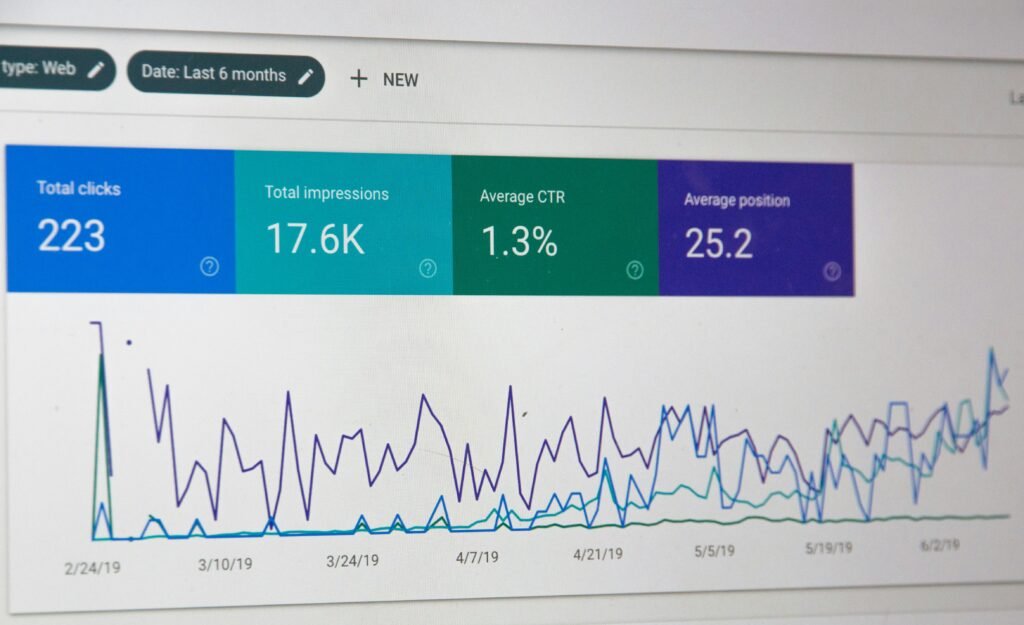
Understanding SEO Basics
Search Engine Optimization (SEO) is a crucial marketing strategy that aims to enhance the visibility of a blog website in search engine results pages (SERPs). At its core, SEO involves optimizing various elements of a website to ensure it aligns with the algorithms used by search engines such as Google, Bing, and Yahoo. Understanding the fundamentals of SEO is paramount for bloggers looking to attract organic traffic.
The significance of https://searchengineland.com/SEO for blogs cannot be overstated. A well-optimized blog can achieve higher rankings in SERPs, making it easier for potential readers to discover your content. This, in turn, increases traffic, improves engagement, and can lead to higher conversion rates, whether it’s for selling products, generating leads, or simply increasing readership.
To navigate the realm of SEO effectively, it is essential to familiarize oneself with key terminologies and concepts. Keywords play a vital role in SEO; they are the specific terms users enter into search engines when seeking information. By identifying and strategically incorporating relevant keywords into your content, you can increase the chances of your blog being found by the right audience.
Another important concept is indexing, which refers to the process by which search engines crawl websites and store information about their content. Proper indexing is essential for search engines to retrieve and display your blog in response to users’ search queries. Additionally, understanding SERPs, the pages displayed by search engines following a user’s query, helps bloggers comprehend how to improve their site’s ranking.
In conclusion, grasping the basics of SEO is vital for anyone looking to establish a successful blog. By understanding how search engines operate and the importance of various optimization strategies, bloggers can create high-quality content that reaches a broader audience and elevates their online presence.
Conducting Keyword Research
Keyword research is a foundational element of effective Search Engine Optimization (SEO), as it allows bloggers to identify the terms and phrases that their target audience is actively searching for. Understanding what keywords resonate with users can significantly influence the content’s visibility on search engine results pages. This section will explore various tools and techniques to help you find the appropriate keywords that align with your niche.
One popular tool for conducting keyword research is Google’s Keyword Planner. This tool provides insights into search volumes, competition levels, and related keywords, facilitating informed decisions about which keywords to target. Additionally, platforms such as SEMrush and Ahrefs offer advanced capabilities, including keyword difficulty analysis and competitive keyword opportunities. Utilizing these resources can lead to discovering high-potential keywords that may have been overlooked.
When selecting keywords, it is essential to analyze search intent. Understanding why a user is searching for a particular term can guide your content creation. There are generally four types of search intent: informational, navigational, transactional, and commercial investigation. By identifying the intent behind your keywords, you can create content that meets the specific needs of your audience, thereby enhancing engagement and improving your site’s SEO performance.
Long-tail keywords, which are longer and more specific phrases, also play a crucial role in keyword strategy. These keywords often exhibit lower competition and higher conversion rates, making them attractive for bloggers aiming to reach a targeted audience. Tools like AnswerThePublic and Ubersuggest can help uncover long-tail keywords relevant to your niche. By integrating these focused keywords into your content, you can improve its SEO potential and better connect with your readers.
On-Page SEO Techniques
On-page SEO is a crucial aspect of boosting the visibility of your blog website. It involves optimizing individual pages to rank higher and earn more relevant traffic from search engines. Key on-page SEO techniques include the optimization of title tags, meta descriptions, header tags, and content structure. These elements play an essential role in signaling to search engines what your content is about, thereby improving rankings and user experience.
The first step in optimizing your title tags is to ensure that they are concise, descriptive, and include relevant keywords. Search engines typically display the first 50-60 characters of a title tag; therefore, placing the target keyword towards the beginning can enhance visibility. Next, a well-crafted meta description should summarize the content of the page in no more than 150-160 characters. It serves not only to inform potential readers but also to encourage clicks from search engine results pages (SERPs).
Header tags (H1, H2, H3, etc.) are essential for organizing content and improving readability. The H1 tag should encapsulate the main theme of the page and typically contains the primary keyword. Subsequent header tags like H2 and H3 can be used to break down content into easily digestible sections while incorporating relevant keywords and synonyms where appropriate. This structured layout makes it easier for both readers and search engines to navigate your content.
Moreover, maintaining a reader-friendly layout is imperative. Use short paragraphs, bullet points, and ample white space to make the content accessible and easy to read. This not only aids in user engagement but can also reduce bounce rates, a factor that search engines consider in ranking algorithms. By implementing these on-page SEO techniques, you can significantly enhance the likelihood that your blog will achieve higher rankings in search results, ultimately driving more traffic to your website.
Creating High-Quality Content
High-quality content serves as the backbone of effective Search Engine Optimization (SEO) for any blog website. The critical role that content plays in enhancing SEO cannot be overstated. Search engines prioritize original, informative, and engaging articles that fulfill user intent. Consequently, it is essential for bloggers to focus on creating content that not only resonates with their target audience but also meets the evolving criteria set by search engines.
To ensure that your blog captivates readers, it is vital to produce various types of content that cater to different preferences. Incorporating informative articles, lists, and how-tos can enhance the overall reader experience. Additionally, the use of storytelling techniques can significantly elevate engagement levels. By weaving personal stories or case studies into your posts, you foster a connection with your audience that keeps them returning for more.
Another aspect of high-quality content is readability. A well-structured article should utilize headings, bullet points, and shorter paragraphs to improve visual appeal and comprehension. This not only aids in SEO but also ensures that readers can easily navigate through the material. Further, incorporating visual elements such as images, infographics, and videos can enrich the content, breaking up text and providing additional value. These elements not only make your blog visually appealing but also explain complex ideas more succinctly.
Moreover, it is crucial to address user queries and provide clear, thorough answers. Utilizing keyword research strategies allows bloggers to identify common inquiries from their audience and structure content around these findings. By integrating relevant keywords naturally within the text, you enhance SEO while maintaining a flow that keeps readers engaged. Prioritizing high-quality content ensures that you attract and retain visitors, ultimately leading to improved search engine rankings and a more successful blog.
Improving User Experience (UX)
User experience (UX) plays a pivotal role in the search engine optimization (SEO) landscape, as it encompasses critical aspects of how visitors interact with your blog. A positive UX not only satisfies user intent but also influences search engine rankings. Key elements to consider include page load speed, mobile-friendliness, and intuitive navigation. Each of these factors contributes significantly to the overall usability of your blog, which is essential for maintaining low bounce rates and increasing dwell time.
Page load speed is a fundamental aspect of UX that directly correlates with both user satisfaction and SEO performance. Studies have shown that visitors are likely to abandon pages that take longer than three seconds to load. To enhance page load speed, consider optimizing images, leveraging browser caching, and using content delivery networks (CDNs). These strategies not only improve loading times but also foster a smoother browsing experience for your audience.
Mobile-friendliness is increasingly crucial, given the growing number of users accessing content via mobile devices. Search engines prioritize mobile-responsive designs in their algorithms. Therefore, utilizing responsive web design ensures that your blog is accessible and visually appealing across various screen sizes. Implementing responsive elements can lead to a seamless user experience while improving your blog’s visibility in search results.
Intuitive navigation is another vital component of UX that impacts how users engage with your content. A well-structured site map allows visitors to find what they are looking for more easily. Incorporating clear menus, a search function, and logical categories enables users to navigate your blog without confusion. By reducing friction in the user journey, you are likely to see a decrease in bounce rates and an increase in time spent on your site, both of which are essential for improving your SEO efforts.
By focusing on these critical elements of user experience, you can create a blog that not only attracts visitors but also retains their interest, ultimately leading to better SEO outcomes.
Utilizing Off-Page SEO Strategies
Off-page SEO is a critical component in enhancing a blog’s authority and improving its ranking in search engine results. Unlike on-page SEO, which focuses on optimizing content within the blog itself, off-page strategies revolve around building a comprehensive online presence and engaging with audiences across various platforms. One of the primary techniques employed in off-page SEO is link building. This process entails acquiring backlinks from reputable websites, which signals to search engines that your blog is a credible source of information. Quality backlinks can significantly influence a blog’s authority and performance on SERPs, making link building an essential focus for any content creator.
Engaging in social media is another effective off-page SEO strategy. By sharing blog content on platforms such as Facebook, Twitter, and Instagram, bloggers can increase visibility and attract more visitors to their site. This form of engagement not only fosters community interaction but also encourages readers to share content, further amplifying reach. Moreover, consistent engagement on social media enhances brand recognition and can lead to higher traffic conversions.
Guest blogging is also a valuable practice within off-page SEO. By contributing articles to other established blogs within the same niche, writers can tap into new audiences and generate good-quality backlinks. This strategy not only boosts visibility but also positions bloggers as experts in their field. Furthermore, managing online reputation by actively responding to comments, reviews, and feedback across platforms establishes credibility and trustworthiness, which enhances the overall perception of a blog.
In summary, employing off-page SEO strategies such as link building, social media engagement, guest blogging, and online reputation management creates a robust online presence beyond the individual website. By integrating these practices, bloggers can significantly improve their search engine rankings and foster a loyal readership.
Leveraging Analytics and Monitoring Tools
In today’s digital landscape, understanding how your blog performs is crucial for enhancing its visibility and reach. Utilizing analytics and monitoring tools like Google Analytics and Google Search Console can provide valuable insights into your blog’s performance and user engagement. These tools facilitate tracking various metrics, enabling bloggers to monitor traffic sources, assess user behavior, and ultimately identify areas for optimization and improvement.
Google Analytics is a comprehensive platform that offers a wealth of data regarding visitors to your blog. It allows you to track where your traffic is coming from—be it direct, organic search, or referral links—providing a clear picture of the effectiveness of your marketing strategies. Additionally, it enables you to analyze user engagement metrics such as bounce rates, session duration, and page views. By understanding these statistics, you can tailor your content to better meet the needs and preferences of your audience, improving overall user experience and retention.
Meanwhile, Google Search Console plays an equally vital role in your SEO strategy. This tool helps you monitor your site’s presence in Google search results, offering insights on queries that lead users to your blog. By carefully analyzing the performance of specific keywords and identifying issues such as crawl errors or site speed, you can adapt your SEO efforts effectively to maximize visibility. It is essential to react to these data insights proactively; for instance, if certain keywords are underperforming, consider optimizing existing content or creating new pieces centered around those topics.
Incorporating these analytics tools into your regular workflow empowers you to make data-driven decisions. By leveraging the insights gained from Google Analytics and Google Search Console, you can adjust your SEO strategies based on real user data, driving targeted traffic to your blog and enhancing its overall performance.
Staying Updated with SEO Trends
In the fast-paced digital landscape, staying updated with SEO trends is pivotal for ensuring your blog remains relevant and visible. Search engine optimization is not a static discipline; rather, it evolves as algorithms and user behaviors change. Adapting your strategies accordingly will help maintain and enhance your blog’s ranking on search engines.
One effective way to remain informed is by following reputable sources that provide insights and updates about SEO. Websites such as Moz, Search Engine Journal, and Google’s own Search Central offer valuable articles, news updates, and best practices. Subscribing to newsletters from these platforms can deliver the latest information directly to your inbox, ensuring that you never miss important changes that could impact your blog’s performance.
Engaging in online forums is another valuable strategy. Communities such as Reddit’s SEO subreddit or various Facebook groups dedicated to SEO discussions can serve as platforms to exchange knowledge, seek advice, and share experiences with fellow bloggers and SEO enthusiasts. Participating in discussions can expose you to diverse perspectives and techniques, which can be beneficial in shaping your SEO tactics.
Moreover, attending webinars and virtual workshops hosted by industry experts can enhance your understanding of current trends and tools. Many organizations and platforms, including SEMrush and Yoast, frequently conduct webinars on specific SEO topics, from keyword research to technical SEO. These sessions often include live Q&A segments, providing an opportunity to clarify any doubts you might have.
In conclusion, making a conscious effort to stay updated with SEO trends is essential for improving your blog’s visibility and efficacy. By regularly engaging with credible sources, participating in discussions, and attending educational events, you can effectively align your SEO strategies with the latest developments in the industry. This proactive approach will not only enhance your knowledge but also ensure that your blog remains competitive in search results.
Conclusion and Next Steps
In conclusion, enhancing the SEO performance of your blog website is a multifaceted endeavor that requires a combination of strategies and a commitment to ongoing improvement. The key takeaways from this discussion include the importance of keyword research, the optimization of on-page elements, the creation of high-quality content, and the establishment of a robust backlink profile. Each of these components plays a crucial role in improving your blog’s visibility on search engines, ultimately driving more organic traffic to your site.
To start implementing these strategies, consider focusing on the following actionable steps. First, conduct thorough keyword research using tools like Google Keyword Planner or SEMrush to identify relevant keywords that resonate with your target audience. Next, ensure that your on-page SEO elements, such as titles, headers, and meta descriptions, are optimized for these keywords, making certain they help to enhance content clarity and relevance.
Furthermore, prioritize producing high-quality, original content that is engaging and informative. Consistency is key, so establish a content calendar to maintain a regular posting schedule. Simultaneously, invest time in building relationships with other bloggers and websites to foster backlinks, which are essential for establishing credibility and authority in your niche. Keep in mind that SEO is not a one-time effort; it requires consistent monitoring, analysis, and adaptation to evolving algorithms and audience needs.
Maintaining patience and persistence throughout this journey will pay off, as SEO improvements often take time to manifest. Regularly assess your blog’s performance using analytical tools to measure your efforts and identify areas for further enhancement. By committing to these practices, you will create a sustainable SEO strategy that significantly improves your blog’s reach and visibility over time.





1 thought on “Effective Strategies to Boost SEO for Your Blog Website”